IC Sourcing
South-Electronic
We’re committed to helping you achieve success in every venture by offering tailored solutions that enhance operational efficiency and reliability. Get a Quote today and see how South-Electronic can empower your business.
Experience Unmatched Quality in IC Sourcing
Welcome to South-Electronic, your definitive resource for top-tier IC sourcing.
We’re all about efficiency, precision, and reliability. No matter if you’re in consumer electronics, automotive, or industrial applications, our sourcing solutions will make sure you get the best performance and quality for your project.
Why Choose South-Electronic?
-
Custom Solutions
Tailor-Made for your project.
Work closely with South-Electronic to customize your IC solution to ensure it precisely meets your specific requirements. Whether it's a specialized component or a complex design, you can rely on us to provide the products you need. -
Premium Quality
You deserve the best, and quality is our top priority.
With our rigorous quality control processes, including thorough inspections and testing, we guarantee that your products will meet the highest standards. Our ICs are defect-free, so you can count on them to perform reliably in your production. -
Clear Communication
Provide you with responsive, clear and efficient service.
That’s why we provide clear, responsive support throughout the entire process. Whether you have a question or need an update, we’re here to keep you informed and make sure your project stays on track. -
Competitive Pricing
You want the best quality at the best price.
That’s why we offer top-quality ICs at competitive prices. You can maximize your profit margins without sacrificing the high standards you require. We offer cost-effective solutions without cutting corners on quality, so you can stay ahead of the competition. -
Fast Global Shipping
You need a partner who can keep up with your fast-paced business.
We offer global shipping with fast turnaround times, so your ICs arrive when you need them. With our reliable logistics, you don’t have to worry about delays. You can stay on schedule and keep your production running smoothly.
Related Project We had Done
Customer Reviews
Common Questions
Most Popular Questions
Send us a message
The more detailed you fill out, the faster we can move to the next step.
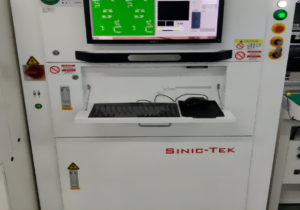
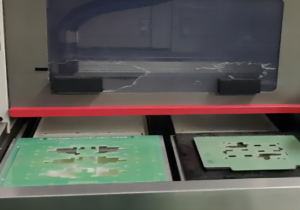
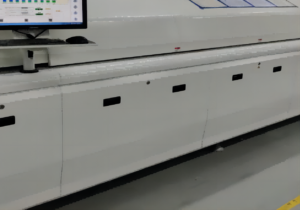
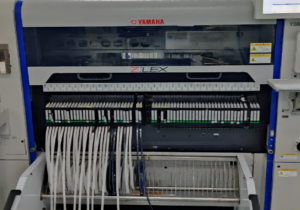
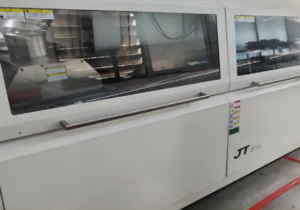
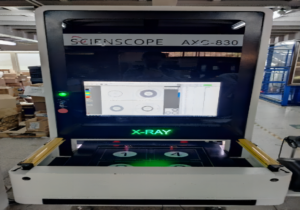

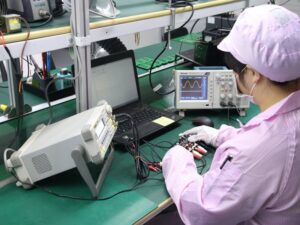

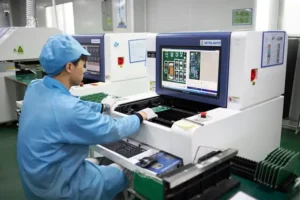



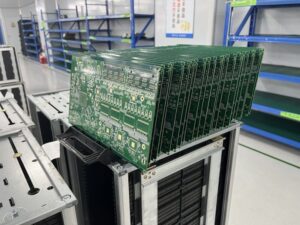

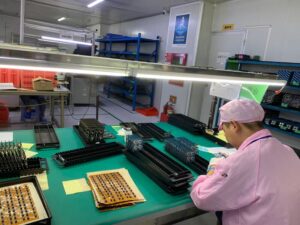



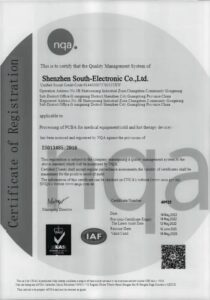
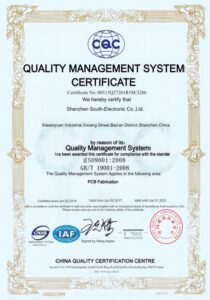







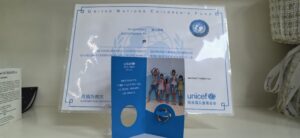

The Complete Guide for IC Sourcing
Contents
Chapter 1
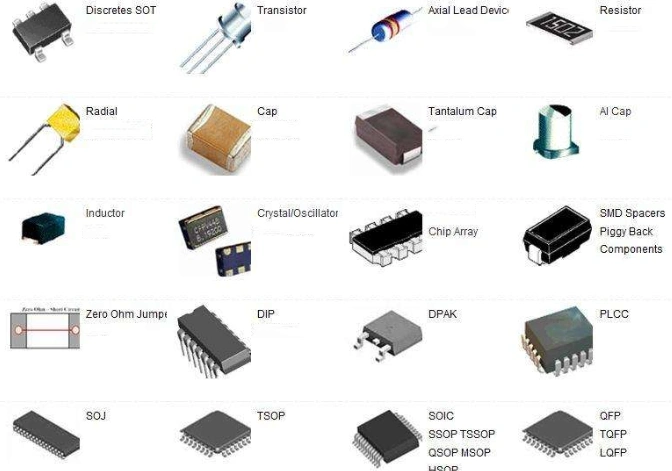
Introduction to IC Sourcing
Overview of Integrated Circuits (ICs) and Their Importance in Modern Electronics
Integrated Circuits (ICs) are the backbone of modern electronic devices. These tiny but powerful components are used to perform a wide range of functions, from amplifying signals to processing information. An IC is essentially a collection of electronic components—such as transistors, resistors, and capacitors—miniaturized and integrated onto a single semiconductor chip. The versatility of ICs allows them to be used in countless applications, including consumer electronics, automotive systems, medical devices, industrial machinery, telecommunications, and more.
In essence, ICs power everything from smartphones and laptops to medical diagnostic equipment and electric vehicles. As technology continues to advance, the demand for more efficient, compact, and powerful ICs grows. Without high-quality ICs, modern electronics and innovations would be impossible.
Why Efficient IC Sourcing is Crucial for Manufacturing Success
For manufacturers, sourcing the right ICs is a critical part of the production process. Efficient IC sourcing involves not just finding the right components at the right price, but ensuring their quality, authenticity, and timely delivery. The sourcing process is often complex due to the vast number of IC types, the variety of suppliers, and the global nature of the market.
The success of manufacturing projects, whether it’s producing consumer gadgets, industrial machinery, or automotive parts, depends on having reliable ICs available when needed. Poor IC sourcing can lead to several risks:
- Delays in Production: If a supplier fails to deliver on time, it can result in costly production delays, which can harm a company’s reputation and profitability.
- Increased Costs: Unreliable suppliers may charge inflated prices or introduce hidden costs, affecting the overall cost-effectiveness of a project.
- Quality Issues: Sourcing low-quality or counterfeit ICs can cause product failures, leading to customer dissatisfaction and costly recalls.
Efficient IC sourcing ensures that manufacturers have a steady supply of high-quality components, which helps keep production on schedule, reduces costs, and ensures the final product meets the desired specifications.
Chapter 2
What is IC Sourcing?
Definition and Key Components of IC Sourcing
IC sourcing refers to the process of identifying, procuring, and managing the supply of integrated circuits (ICs) for use in electronic products. It involves multiple stages, including selecting suppliers, negotiating contracts, ensuring component quality, handling logistics, and managing inventory. The goal of IC sourcing is to secure the right components at the right price, in the right quantity, and at the right time to meet production requirements.
Effective IC sourcing is crucial for manufacturers, as it directly impacts product quality, time-to-market, and cost efficiency. To ensure successful sourcing, companies need to manage several key components:
Supplier Selection: Finding reliable suppliers who can consistently deliver high-quality ICs. This requires evaluating factors like supplier reputation, manufacturing capacity, delivery reliability, and pricing.
Quality Control: Ensuring that the ICs sourced meet stringent quality standards. This includes verification through third-party testing, certifications, and providing quality assurance documentation with every shipment.
Cost Management: Negotiating favorable pricing agreements with suppliers while maintaining control over cost fluctuations, especially in a market where IC prices can vary based on supply-demand dynamics.
Logistics & Supply Chain Management: Coordinating the transportation of ICs from suppliers to manufacturers. Given the global nature of the IC market, logistics play a vital role in ensuring timely delivery and reducing the risk of stockouts or production delays.
Inventory Management: Managing the flow of ICs to ensure adequate stock levels without overstocking, which can result in high holding costs. This involves working closely with suppliers to anticipate demand spikes and maintain optimal inventory levels.
The Role of IC Sourcing in the Supply Chain
IC sourcing plays a critical role in the broader supply chain of electronics manufacturing. Integrated circuits are often the most complex and essential components in electronic devices, making their timely and reliable sourcing a cornerstone of efficient production. Here’s how IC sourcing fits into the supply chain:
Procurement and Production Coordination: IC sourcing directly feeds into the procurement process, which is the first step in production. The availability of ICs influences the entire production timeline. Without reliable sourcing, a manufacturer risks delays in assembly, bottlenecks in production, and even halted operations.
Product Design and Development: In many cases, sourcing decisions are made even before the product’s final design is completed. Designers must consider the availability, pricing, and technical specifications of ICs during the design phase to avoid last-minute sourcing issues that could lead to delays or redesigns.
Cost Efficiency: Sourcing decisions have a direct impact on the overall cost of the product. By securing competitive prices and reliable suppliers, manufacturers can keep costs down, which is crucial in industries where margins are tight. Efficient sourcing can also reduce operational costs by minimizing the risks of production delays or quality control failures.
Risk Mitigation: Effective IC sourcing helps mitigate risks such as supply shortages, geopolitical issues, or natural disasters that could disrupt the global supply chain. By having multiple suppliers or alternative sourcing options, manufacturers can ensure continuity and minimize disruptions.
Innovation and Scalability: With rapid advancements in technology, sourcing the latest ICs can enable manufacturers to innovate faster and meet new consumer demands. Sourcing providers often help manufacturers access the newest ICs, which can be critical for staying ahead of competition in the rapidly evolving tech market.
Different Types of ICs
Integrated circuits can be classified into various types based on their functionality and the kind of signal processing they perform. Here are the main categories of ICs:
Analog ICs:
Analog ICs are designed to handle continuous signals and are used in applications where signals vary in a continuous range. These ICs process signals such as sound, light, temperature, and pressure. Common examples include:- Operational Amplifiers (Op-Amps): Used in audio systems, instrumentation, and analog signal processing.
- Voltage Regulators: Used to maintain a consistent voltage level across circuits in power supplies.
- Power Management ICs: Used in power conversion and energy efficiency applications.
Digital ICs:
Digital ICs handle discrete signals that represent binary data (0s and 1s). These ICs are essential in digital electronics and are responsible for logic operations, memory storage, and communication. Examples include:- Microcontrollers: Small, programmable ICs used in embedded systems to control devices like home appliances, toys, and automotive systems.
- Memory ICs: Such as RAM (Random Access Memory) and ROM (Read-Only Memory), used in computing and storage applications.
- Logic Gates: ICs used to perform basic logical operations (AND, OR, NOT) in digital systems.
Mixed-Signal ICs:
Mixed-signal ICs combine both analog and digital functions on a single chip. These ICs are often used in systems that require both types of signal processing. They are crucial in applications such as:- Analog-to-Digital Converters (ADC): Convert analog signals to digital signals for processing in digital systems, used in sound cards, sensors, and communication devices.
- Digital-to-Analog Converters (DAC): Convert digital signals into analog signals, essential for audio and video output systems.
- Signal Processors: Used in telecommunication systems, medical equipment, and automotive electronics for processing both analog and digital signals.
By understanding the different types of ICs and their role in the system, companies can make better decisions about which ICs to source for specific applications, ensuring their designs meet both functional and performance requirements.
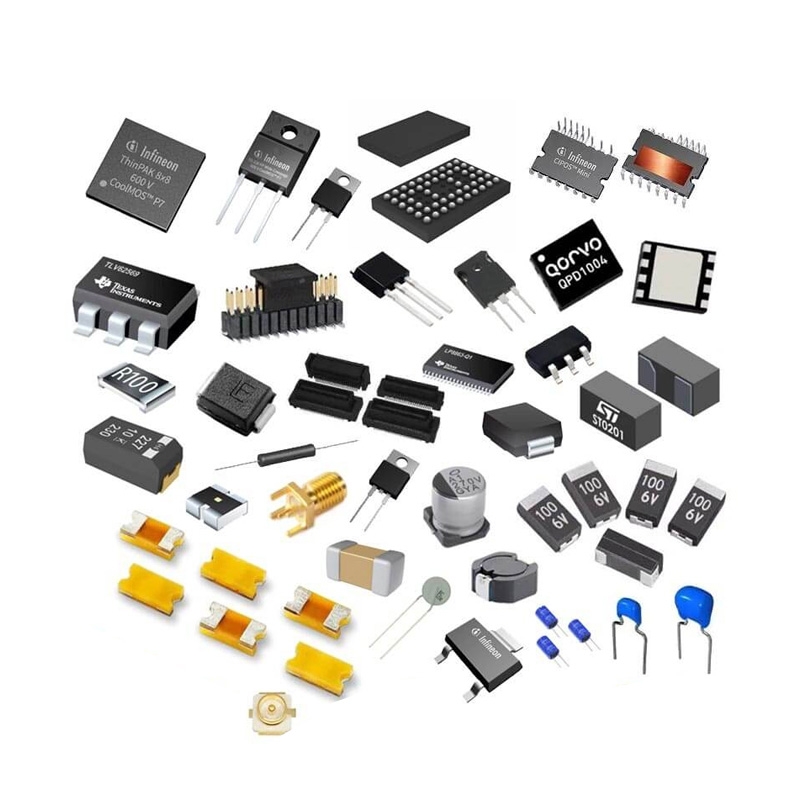
Chapter 3
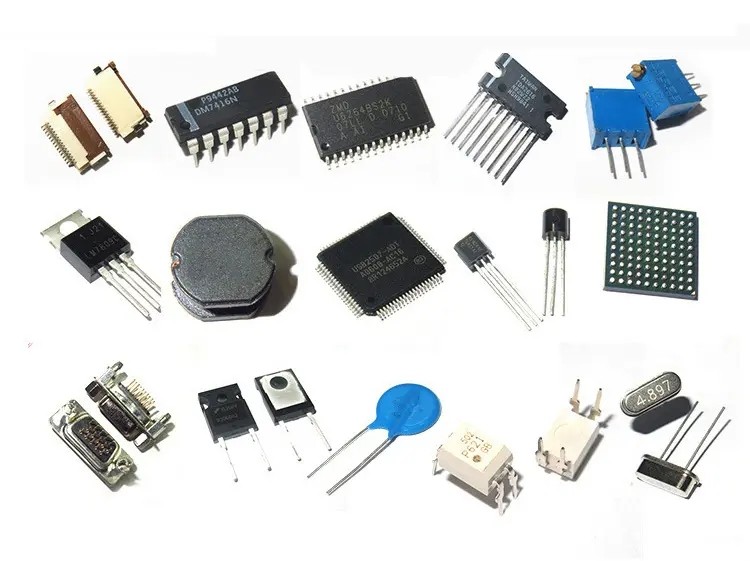
Why Choose Professional IC Sourcing Providers?
Advantages of Working with Experienced IC Sourcing Companies
Opting for professional IC sourcing providers offers a range of advantages that help ensure the success of your projects. Here are some of the key benefits:
Expertise and Market Knowledge: Experienced sourcing companies have a deep understanding of the IC market, including supplier networks, industry trends, and the latest technologies. This expertise enables them to recommend the best components for your needs, often saving you time and effort in identifying suitable ICs.
Access to a Global Network of Suppliers: Professional sourcing providers often have established relationships with a wide range of suppliers around the world. This gives them access to a broader selection of ICs and allows them to secure the best deals, whether you’re sourcing mainstream or hard-to-find components.
Risk Mitigation: One of the major advantages of working with a professional sourcing company is their ability to identify and mitigate risks. Experienced providers are well-versed in handling supply chain disruptions, identifying counterfeit products, and ensuring that only high-quality ICs are delivered to you.
Negotiation Power: Due to their long-standing relationships with suppliers, professional IC sourcing companies often have better bargaining power when it comes to pricing, delivery terms, and warranties. This can result in more competitive prices and favorable contract terms for manufacturers.
How Professional Sourcing Improves Product Reliability and Time-to-Market
Ensuring Consistent Supply: One of the main benefits of working with a professional sourcing provider is ensuring that the ICs you need are available when you need them. Sourcing companies typically have strong relationships with their suppliers, which helps secure a consistent supply of high-quality components. This minimizes the risk of production delays due to stockouts or supply chain issues.
Faster Time-to-Market: Professional IC sourcing providers are skilled in managing timelines and ensuring that components are delivered promptly. By working with established suppliers and having a streamlined procurement process, these companies can help accelerate the production process, which in turn reduces your time-to-market.
Quality Assurance: A reputable sourcing provider will ensure that the ICs they supply are tested and meet your required specifications. This helps prevent issues with product reliability and performance, which are crucial for maintaining customer satisfaction. With professional sourcing, you can avoid the costly consequences of product failures that might occur if low-quality or counterfeit parts are used.
Adaptation to Changes: A professional sourcing partner is more agile when it comes to responding to sudden changes in demand or specifications. Whether it’s finding an alternative IC due to obsolescence or quickly sourcing components in response to an urgent production need, professional sourcing companies are better equipped to handle unexpected challenges without disrupting the production schedule.
Avoiding Common Pitfalls in DIY Sourcing
While DIY sourcing can seem like a cost-saving option, it often exposes manufacturers to several risks that professional sourcing companies are equipped to avoid:
Counterfeit Parts: One of the most significant risks in IC sourcing is the prevalence of counterfeit or substandard components. Without the expertise to identify fraudulent parts, DIY sourcing can result in poor-quality ICs that compromise the performance and reliability of the final product. Professional sourcing companies have stringent testing processes and established relationships with certified suppliers, ensuring that only authentic, high-quality components are provided.
Shipping Delays and Logistical Challenges: Sourcing ICs from overseas suppliers often involves complex logistics and shipping arrangements. Without the proper systems in place, DIY sourcing can lead to delays in delivery, missed deadlines, and higher shipping costs. Professional sourcing providers are experienced in managing the logistics of international shipments, ensuring timely delivery and smooth customs clearance.
Quality Control Issues: Quality issues are another common challenge with DIY sourcing. Without a thorough quality control process in place, there is a higher risk of receiving defective, incompatible, or non-compliant ICs. Professional sourcing companies usually have established quality assurance procedures, including third-party testing, to guarantee that the ICs meet the required standards and specifications before shipment.
Legal and Compliance Risks: Sourcing components from unreliable or unverified suppliers can expose your business to legal and compliance risks, especially with counterfeit parts or unlicensed designs. Professional sourcing companies ensure that all components comply with relevant industry standards, intellectual property laws, and regulatory requirements, mitigating the risk of legal complications.
In conclusion, while DIY sourcing may seem appealing for its cost-saving potential, the risks associated with counterfeit parts, delayed shipments, and quality control issues often outweigh the benefits. By partnering with a professional IC sourcing provider, manufacturers can ensure consistent, reliable supply chains, improved product quality, and faster time-to-market—all of which contribute to the overall success of the business.
Chapter 4
Key Factors to Consider When Sourcing IC
When sourcing Integrated Circuits (ICs), several critical factors must be considered to ensure that the components you receive meet your project’s requirements for quality, timing, cost, and reliability. These factors are essential in mitigating risks such as counterfeit parts, production delays, and unexpected cost escalations. Below are the key considerations when sourcing ICs:
Quality Assurance
Quality is paramount when sourcing ICs, as substandard or counterfeit components can cause product failures, damage to your brand reputation, and financial losses. To ensure the authenticity and compliance of the ICs you source, here are key steps to follow:
Third-Party Testing: Reliable IC sourcing providers typically offer third-party testing services to verify the authenticity and performance of components. This includes ensuring that the ICs meet industry standards and are free from defects or counterfeits.
Certifications and Documentation: Ensure that the supplier provides necessary quality certifications, such as ISO 9001, RoHS (Restriction of Hazardous Substances), and UL (Underwriters Laboratories) certifications. These documents indicate that the ICs have passed required industry and safety standards.
Traceability: Choose suppliers who offer traceability for every batch of ICs they supply. This means that each component can be tracked back to its origin, allowing for quick identification if quality issues arise. Traceability also helps ensure that the ICs meet the specific requirements of your project.
Counterfeit Prevention: Be sure that your supplier has anti-counterfeit measures in place, such as working with authorized distributors and using secure channels to source ICs. A trusted supplier will have systems in place to avoid counterfeit or refurbished parts, which are common in the IC market.
Lead Time
Lead time refers to the amount of time it takes for ICs to be delivered after placing an order. Efficient lead time management is essential to ensure that your production schedules are met without delays. Here’s why lead time is important:
Production Scheduling: Delays in IC delivery can disrupt the entire production process. A shorter lead time allows manufacturers to stick to project timelines and minimize downtime in their manufacturing processes. A reliable sourcing provider will have robust logistics networks in place to deliver components on time, even for custom or hard-to-find ICs.
Stockouts and Delays: Long or unpredictable lead times may result in stockouts, which can halt production and delay the product launch. It’s critical to work with a sourcing provider who can meet deadlines and deliver components when needed. Ensure the supplier offers expedited shipping or priority services if time-sensitive projects require quicker turnarounds.
Planning for Supply Chain Disruptions: Sometimes, external factors such as natural disasters, geopolitical tensions, or supply shortages can affect lead times. A professional sourcing provider should have contingency plans in place, such as building up inventory for high-demand or high-risk components, to mitigate these issues.
How to Assess and Choose Trustworthy Supplier?
Selecting a reliable IC supplier is one of the most important decisions when sourcing components. Here’s how to assess whether a supplier is trustworthy:
Reputation and Reviews: Research potential suppliers’ reputations by checking online reviews, testimonials, and case studies. Feedback from other businesses, particularly those in similar industries, can provide insights into the supplier’s reliability, quality of service, and performance under pressure.
Experience and Expertise: Evaluate the supplier’s experience in the industry. A supplier with years of experience and specialization in IC sourcing will likely have established relationships with reputable manufacturers and will be adept at handling complex sourcing challenges.
Customer Support and Communication: A reliable supplier will offer strong customer support, including clear communication channels for order tracking, addressing concerns, and handling emergencies. They should be responsive and available to help resolve any issues that may arise during the sourcing or delivery process.
Compliance and Certification: Trusted suppliers will be compliant with all relevant regulations and industry standards, such as RoHS (Restriction of Hazardous Substances), REACH (Registration, Evaluation, Authorization, and Restriction of Chemicals), and ISO 9001 quality management certifications. These certifications demonstrate a supplier’s commitment to maintaining high-quality standards.
Supply Chain Transparency: A trustworthy supplier should be transparent about their sourcing practices, providing information on where the ICs come from and how they are tested. Transparency in the supply chain helps ensure that there are no hidden risks of counterfeit or substandard products.
Pricing is a key factor when sourcing ICs, but it’s important to look beyond the initial price quote to fully understand the total cost of sourcing. Here’s how to ensure pricing transparency:
Clear and Transparent Pricing: A reputable IC sourcing provider will offer clear pricing without hidden fees. Ensure that the supplier outlines all costs upfront, including shipping, handling, testing, and any additional charges that may arise. Hidden fees can inflate the total cost of your components, affecting your project’s budget.
Negotiation and Volume Discounts: Professional IC sourcing providers often offer volume discounts or pricing flexibility based on the size of the order. It’s beneficial to negotiate pricing terms that align with your project’s scale and long-term needs, which can result in cost savings over time.
Currency Exchange and Import Taxes: When sourcing ICs internationally, currency exchange rates and import duties may affect the final cost. Make sure to account for these factors in your budget and understand how your supplier handles such additional costs. A good supplier will provide you with a clear breakdown of costs related to international transactions, including taxes, tariffs, and currency fluctuations.
Long-Term Relationships: Building a long-term relationship with a trusted supplier can lead to better pricing over time, as the supplier becomes familiar with your business needs and can offer preferential rates based on your ongoing business volume.
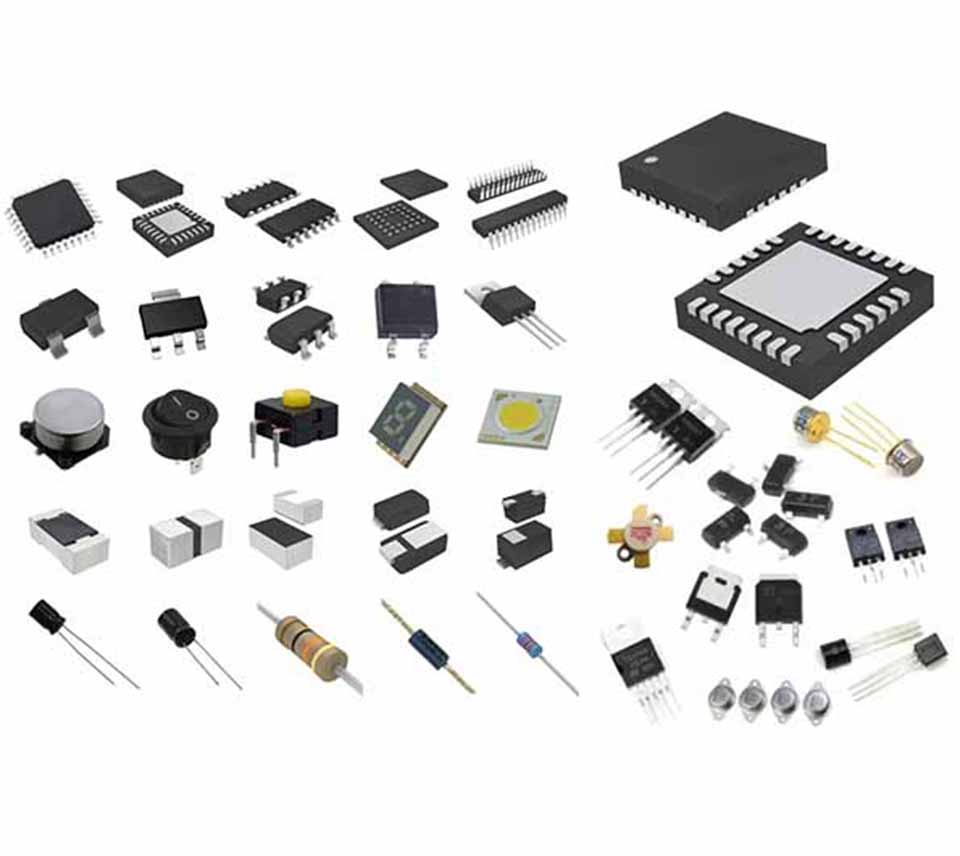
Chapter 5
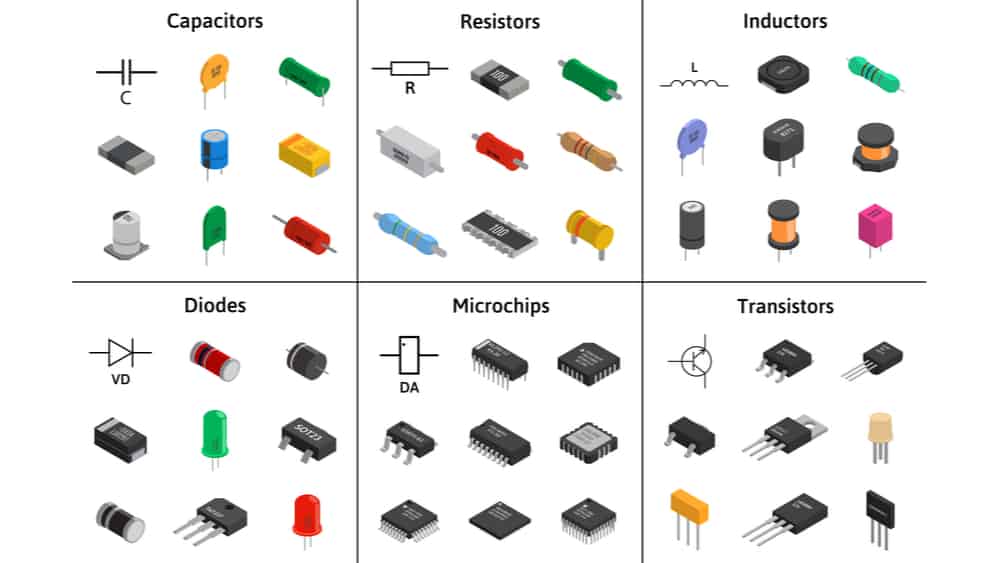
How to Find the Right IC Sourcing Partner?
Choosing the right IC sourcing partner is one of the most important decisions you can make for your business. A trusted sourcing partner can make the difference between project success and costly delays. Here’s a detailed guide on how to find the right partner for your IC sourcing needs:
Tips for Selecting a Professional Sourcing Partner
When evaluating potential IC sourcing partners, there are several key factors to consider:
Location: The location of your sourcing partner plays a crucial role in determining shipping times, costs, and the ease of communication. Ideally, your partner should be located in a region with a well-established electronics supply chain, such as Shenzhen, China, or other global electronics hubs. However, it’s important to balance location with reliability, so don’t be solely driven by proximity—consider the logistics and lead time that align with your production needs.
Experience: A partner with years of experience in the IC sourcing industry brings invaluable expertise. Experienced sourcing companies understand the complexities of the IC market, know how to navigate supply chain disruptions, and have established relationships with trusted suppliers. Look for a partner with proven experience in sourcing ICs for the specific industries and applications relevant to your business (e.g., automotive, consumer electronics, medical devices).
Reputation and Reviews: A reliable partner will have a strong reputation in the industry. Research the company’s track record by reading customer reviews, testimonials, and case studies. Ask for references from previous clients who have used their services, particularly those with similar needs. Positive reviews and feedback from satisfied customers are a good indicator of trustworthiness and quality.
The Benefits of Global Sourcing Networks and Local Suppliers
IC sourcing often requires balancing between global sourcing networks and local suppliers, each offering distinct advantages:
Global Sourcing Networks: A global network allows you to access a wide range of ICs, including rare or specialized components that may not be readily available locally. Working with a partner who has a global reach means you can tap into a diverse supplier base and secure the best deals on components from around the world. This is particularly useful for sourcing components that are in high demand or out of stock in your local market.
Additionally, global sourcing providers can offer competitive pricing by leveraging economies of scale and taking advantage of favorable international shipping terms.
Local Suppliers: Local sourcing partners can offer faster shipping times, reduced transportation costs, and easier communication. They can help streamline the procurement process, particularly when time-sensitive orders are required. Local suppliers can also help mitigate risks related to global supply chain disruptions, such as customs delays, tariff changes, or international trade restrictions.
By working with local suppliers, you can also develop closer business relationships, making it easier to resolve any issues quickly and effectively.
Chapter 6
Sourcing ICs for Different Industries
The sourcing of Integrated Circuits (ICs) is not a one-size-fits-all process. Different industries have unique requirements for the types of ICs they use, their performance specifications, and the sourcing strategies needed to meet their production schedules. Below, we’ll explore custom sourcing solutions for key industries, highlighting how sourcing needs differ based on the industry and product type.
Custom Sourcing Solutions for Various Industries
Consumer Electronics
- IC Needs: In consumer electronics, ICs are essential for functions such as signal processing, power management, connectivity, and user interface control. Examples of ICs used in this sector include microcontrollers, power management ICs, RF ICs, and audio/video ICs.
- Sourcing Considerations: Consumer electronics often require high-volume sourcing and fast delivery times to keep up with market trends and rapid product lifecycles. As new technologies emerge, sourcing partners must stay ahead of obsolescence and provide access to the latest ICs. Additionally, cost-effectiveness is critical in this highly competitive market.
- Example: A global smartphone manufacturer may require a mix of custom-designed ICs and off-the-shelf components, necessitating a sourcing partner with the ability to supply both high-performance chips and low-cost components, often in large quantities.
Automotive
- IC Needs: Automotive electronics are integral to vehicle safety, navigation, powertrain control, infotainment systems, and more. Automotive ICs typically include microcontrollers, sensors, power management ICs, and communication ICs for vehicle-to-vehicle (V2V) and vehicle-to-infrastructure (V2I) networks.
- Sourcing Considerations: In the automotive industry, IC sourcing must meet strict standards for reliability and safety. Components must be able to withstand extreme temperatures, vibrations, and other harsh conditions. Furthermore, ICs used in automotive applications often have longer product lifecycles and require extended availability from suppliers.
- Example: A company manufacturing autonomous vehicles would require ICs that can support real-time data processing and advanced sensor fusion, such as high-performance processors and AI-based ICs for decision-making algorithms.
Medical Devices
- IC Needs: Medical devices require ICs that meet rigorous safety, performance, and regulatory standards. ICs in this field are used for vital monitoring systems, diagnostics, imaging equipment, and even wearable health tech. Common types include analog ICs for sensor signals, microcontrollers for device control, and wireless communication ICs for remote monitoring.
- Sourcing Considerations: Medical IC sourcing must prioritize quality assurance, certification, and traceability. Components need to meet ISO certifications and comply with medical device regulations such as the FDA in the U.S. Additionally, sourcing medical-grade ICs often requires longer lead times due to stringent testing and quality control requirements.
- Example: A medical device manufacturer might need to source low-power, high-precision analog ICs for an ECG monitoring system. These ICs must meet stringent regulatory standards and be highly reliable, with long-term availability guaranteed.
Industrial Automation
- IC Needs: In industrial automation, ICs play a crucial role in controlling machinery, robotics, and factory processes. Key ICs include programmable logic controllers (PLCs), motor drivers, power management ICs, and communication ICs for industrial Internet of Things (IIoT) networks.
- Sourcing Considerations: The sourcing of ICs for industrial automation must consider factors like long-term availability, robustness, and performance in harsh industrial environments. Automation systems often have long product lifecycles and require reliable sourcing of components that can endure demanding conditions, including extreme temperatures, dust, and electromagnetic interference.
- Example: A company developing robotic arms for manufacturing processes may need to source ICs capable of supporting real-time control systems, including high-performance microprocessors and motor driver ICs that offer precise control in heavy-duty operations.
How Sourcing Needs Differ Across Industries and Product Types
The sourcing needs across different industries can vary significantly due to factors such as regulatory compliance, product lifecycle expectations, environmental conditions, and the level of innovation required. Here’s a breakdown of how these factors influence sourcing strategies:
Regulatory Compliance: Industries like medical devices and automotive have strict regulatory standards that dictate the types of ICs that can be used in their products. In contrast, consumer electronics may focus more on cost-effectiveness and speed to market, with fewer regulatory hurdles. This requires sourcing partners who understand and can navigate these industry-specific regulations.
Product Lifecycle: Industries such as automotive and industrial automation typically require ICs that will be available for many years, ensuring that components remain in production for the long term. Consumer electronics, on the other hand, have shorter product lifecycles and often require components that can be rapidly replaced by newer models, making the focus on flexibility and speed even more critical.
Environmental Conditions: Industrial automation and automotive sectors often require ICs that can withstand extreme environmental conditions, including temperature fluctuations, vibrations, and exposure to moisture or dust. Sourcing partners must be able to supply ICs that meet these specific environmental requirements, often with additional certifications (e.g., IP ratings for moisture and dust resistance).
Volume and Customization: In industries like consumer electronics, manufacturers typically order ICs in large volumes, often in a standardized form. However, in industries like medical devices or automotive, there may be more need for customized ICs to meet specific performance and regulatory requirements. In these cases, a sourcing partner must be able to provide tailored solutions and even collaborate on designing custom ICs.
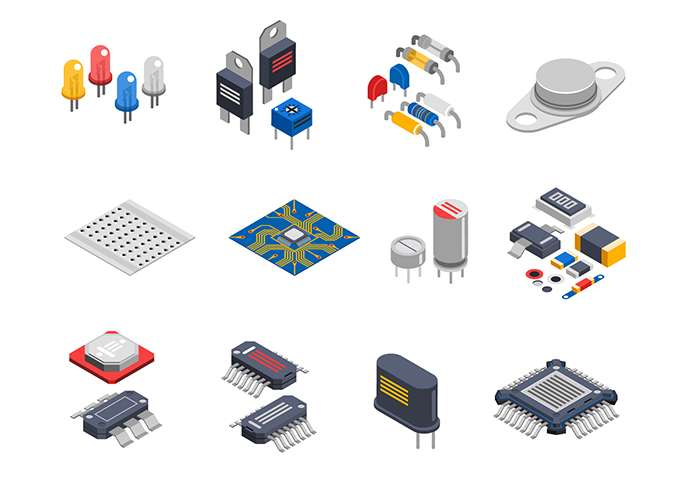
Chapter 7
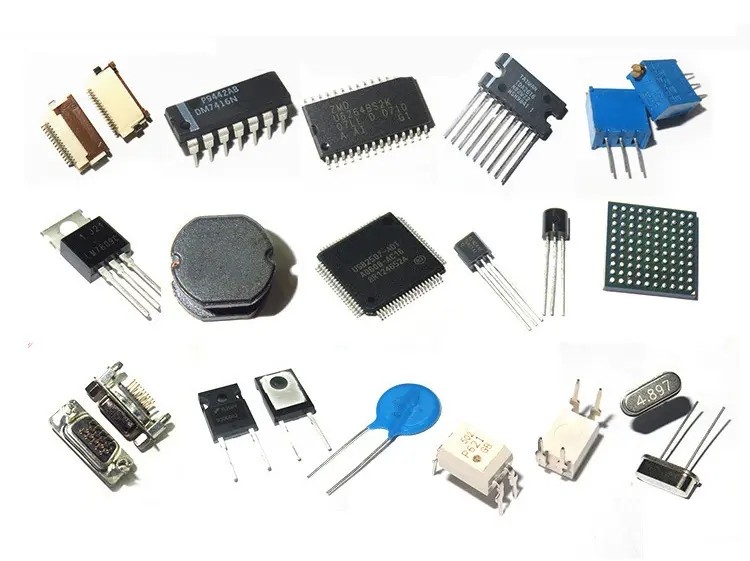
The Role of IC Testing and Quality Control
Ensuring the quality and authenticity of Integrated Circuits (ICs) is one of the most crucial steps in the sourcing process. ICs are often the most critical components in electronic products, and any defects, failures, or counterfeit parts can have serious repercussions, including product malfunctions, customer dissatisfaction, safety issues, and costly recalls. Therefore, robust testing and quality control measures must be in place to guarantee the reliability of ICs used in your products.
Importance of Third-Party Testing and Verification
Third-party testing plays a vital role in ensuring that sourced ICs meet the necessary performance and quality standards. Independent testing organizations provide an unbiased assessment of components and help verify that the ICs meet industry certifications, specifications, and regulatory requirements. Third-party testing is essential for:
Verification of Authenticity: Counterfeit ICs are a significant issue in the electronics industry. Third-party testing helps verify the authenticity of ICs, ensuring that the components you receive are genuine and have not been tampered with or refurbished.
Compliance with Standards: ICs must meet specific industry standards depending on the application, whether it’s RoHS (Restriction of Hazardous Substances), ISO 9001, UL (Underwriters Laboratories) certification, or other industry-specific standards. Third-party testing ensures that the ICs comply with these regulations, which is essential for safety, environmental compliance, and product certification.
Reliability and Performance Testing: Third-party testing facilities have the equipment and expertise to evaluate the reliability and performance of ICs under various conditions. This includes testing the ICs in extreme temperatures, voltage fluctuations, and over extended usage periods to ensure they will perform consistently in real-world applications.
Types of Quality Control Measures
Effective quality control (QC) is essential at every stage of the IC sourcing process, from initial supplier selection to the final inspection of components before they are integrated into products. The following are key quality control measures commonly used in IC sourcing:
Visual Inspection: Visual inspection is a basic but essential part of the quality control process. During this inspection, the physical integrity of the IC is checked for obvious defects, such as scratches, corrosion, or physical damage that could affect functionality. ICs are also checked for proper labeling to ensure they match the specified part numbers and are free from counterfeit marks.
Electrical Testing: Electrical testing involves testing the IC’s functionality and performance against its specifications. This can include:
- Functional Testing: Ensures the IC performs its intended function, such as processing signals or controlling power in the circuit.
- Parametric Testing: Involves testing the IC’s electrical parameters, such as voltage levels, current consumption, and power dissipation, to verify that it meets the manufacturer’s specifications.
- Burn-In Testing: Involves running the IC under continuous operation for an extended period to check for early-life failures. This test is particularly important for high-performance ICs used in mission-critical applications, such as medical devices or automotive safety systems.
Environmental Stress Testing: This type of testing ensures that ICs can withstand extreme environmental conditions. Tests may include exposure to high temperatures, humidity, vibrations, and other harsh conditions that ICs might encounter in real-world applications. Environmental stress tests simulate the conditions under which the ICs will operate in end products, providing confidence in their long-term durability and reliability.
Lot Sampling: For large volume orders, suppliers often use statistical sampling methods to check a portion of the ICs from each lot to assess their overall quality. This method helps identify any potential issues with the batch without needing to test every single IC.
How to Ensure the Authenticity of Sourced ICs and Avoid Counterfeit Components
Counterfeit ICs pose a significant threat to product reliability, safety, and company reputation. Counterfeit ICs can have severe consequences, including failure to meet performance specifications, malfunctions, or even causing safety hazards. To ensure the authenticity of sourced ICs and protect against counterfeit components, take the following steps:
Work with Authorized Distributors: One of the best ways to ensure the authenticity of your ICs is to source them from authorized distributors or reputable manufacturers. These distributors typically have strict quality assurance processes in place and can guarantee that the ICs they sell are genuine.
Verify Part Numbers and Labels: Always check that the part numbers and labeling on the ICs match those specified by the manufacturer. Counterfeit ICs often have small differences in labeling or font that can indicate they are fake. It’s important to verify that the part numbers on the ICs match what is listed in the datasheets or product manuals.
Use Anti-Counterfeit Technologies: Many manufacturers and distributors now use anti-counterfeit technologies, such as holograms, RFID tags, and serialization, to protect against counterfeit parts. These technologies can help track the IC’s authenticity through the supply chain and ensure that the parts you receive are genuine.
Perform Reverse Engineering: In some cases, companies may choose to reverse engineer a sample IC to verify its authenticity. This process involves dissecting the IC to examine its internal construction and materials. While this can be a more involved and expensive process, it is sometimes necessary for high-stakes applications, such as aerospace or medical devices, where counterfeit parts can have catastrophic consequences.
Use Third-Party Verification Services: Some specialized companies offer third-party verification services for ICs. These services can conduct independent tests to confirm the authenticity and quality of ICs before they are used in production. Verification services are particularly useful when sourcing ICs from less-trusted or non-authorized suppliers.
By implementing thorough testing and quality control procedures, and by taking proactive measures to verify authenticity, you can protect your company from the risks associated with counterfeit parts and substandard ICs. This ensures that your end products are reliable, safe, and meet customer expectations.
Chapter 8
Managing Supply Chain Risks in IC Sourcing
In today’s global market, managing the risks associated with IC sourcing is essential for maintaining a stable production line and meeting customer demands on time. Due to the complex and interconnected nature of the electronics supply chain, manufacturers face several risks that can disrupt production schedules, increase costs, and affect product quality. By understanding these risks and implementing effective strategies to mitigate them, businesses can safeguard their operations and maintain a competitive edge.
Understanding Supply Chain Risks
Price Volatility:
Price volatility is a significant risk in the IC sourcing market, driven by various factors such as raw material costs, global supply-demand imbalances, and market speculation. IC prices can fluctuate dramatically due to the semiconductor industry’s reliance on specific materials like silicon, copper, and rare earth elements. Price hikes in raw materials or during periods of scarcity can cause significant increases in the overall cost of production, affecting profit margins.- Impact: Manufacturers might experience cost overruns or be forced to pass price increases onto their customers, which could affect competitiveness.
- Example: A sudden surge in demand for semiconductors (e.g., due to a global shift to electric vehicles) can lead to higher prices for memory ICs, microcontrollers, and power management chips.
Component Shortages:
One of the most pressing risks in IC sourcing today is the frequent occurrence of component shortages. Semiconductor supply chains can be severely impacted by sudden shifts in demand, capacity constraints, and disruptions caused by natural disasters, trade disputes, or pandemics. The COVID-19 pandemic, for example, exposed vulnerabilities in the semiconductor supply chain, leading to widespread shortages of critical components.- Impact: Shortages can delay production, increase lead times, and create backlogs, which directly affect time-to-market and customer satisfaction. Manufacturers may need to delay product launches or scramble to find alternative parts, which can be costly.
Geopolitical Issues:
Geopolitical tensions and trade wars can also disrupt the global supply of ICs. Tariffs, export restrictions, and sanctions can create barriers to the free flow of components across borders, leading to delays, higher costs, and sourcing challenges. The ongoing trade tensions between the U.S. and China, for example, have had significant implications for the global semiconductor market, especially when it comes to sourcing from Chinese manufacturers or suppliers using Chinese-made components.- Impact: Political instability or trade restrictions can cause unpredictable disruptions in the supply chain. Companies may face difficulties sourcing parts from certain regions or be forced to adapt to new, less favorable trade conditions.
Strategies to Mitigate Supply Chain Risks
Building Buffer Stocks:
One effective way to mitigate the risks of price volatility and component shortages is by building buffer stocks of critical ICs. By maintaining an inventory of key components that are essential to production, companies can cushion the impact of supply disruptions and reduce the risk of production halts.- How It Works: Buffer stocks provide a safety net in the event of supply chain disruptions, allowing manufacturers to continue production without delay while waiting for new shipments. By purchasing critical components in advance, manufacturers can take advantage of lower prices during periods of stability and avoid price hikes during periods of high demand.
- Best Practices: It’s important to balance the size of the buffer stock to avoid excessive inventory costs. Overstocking can tie up cash flow, while understocking can lead to shortages. Efficient inventory management, including real-time tracking and demand forecasting, is key to maintaining optimal buffer stock levels.
Finding Alternative Suppliers:
Relying on a single supplier for critical ICs can be risky, especially if that supplier is affected by market conditions or geopolitical issues. Diversifying your supplier base by identifying alternative suppliers is an essential strategy to reduce dependency on any one source and ensure a more resilient supply chain.- How It Works: By sourcing from multiple suppliers in different regions or countries, businesses can reduce the risk of disruption from any one supplier. This strategy also provides more flexibility when responding to changes in pricing or availability.
- Supplier Qualification: It’s important to ensure that alternative suppliers meet the same quality standards and provide the same level of service as the primary supplier. A rigorous supplier qualification process—including checks on reliability, product quality, and delivery times—can help ensure a smooth transition when switching suppliers.
Strategic Partnerships and Long-Term Contracts:
Establishing long-term partnerships with key suppliers or entering into long-term contracts can help secure preferential pricing, reliable lead times, and guaranteed supply. By committing to a supplier over an extended period, you may also be able to negotiate better terms and ensure priority access to critical components during times of high demand.- How It Works: Long-term contracts or strategic alliances can provide more predictable pricing and guarantee availability even during market shortages. These agreements can also help lock in prices for a certain period, minimizing the impact of price volatility.
- Example: A manufacturer in the automotive industry may enter into a long-term contract with a semiconductor supplier to secure a steady supply of microcontrollers and power management ICs for its vehicles, ensuring that production schedules are met without disruption.
Supply Chain Visibility and Real-Time Monitoring:
Another key strategy is increasing supply chain visibility through real-time monitoring tools and analytics. These tools can help you track inventory levels, monitor supplier performance, and anticipate potential disruptions before they occur. With advanced analytics, manufacturers can forecast demand more accurately, identify risks, and make proactive decisions to mitigate them.- How It Works: Real-time data helps supply chain managers identify early warning signs of potential supply disruptions, such as delayed shipments or factory shutdowns, so they can take corrective actions quickly. This includes activating buffer stocks or sourcing from alternate suppliers when necessary.
- Example: By implementing a supply chain monitoring system, a medical device manufacturer can track the status of its IC orders and receive alerts about any potential delays or quality issues from its suppliers.
Conclusion
Managing supply chain risks in IC sourcing requires a proactive approach and a deep understanding of the factors that can impact availability, cost, and quality. By implementing strategies like building buffer stocks, diversifying suppliers, negotiating long-term contracts, and increasing supply chain visibility, manufacturers can reduce exposure to risks and maintain a resilient, efficient supply chain. In a world of unpredictable market conditions, companies that effectively manage their IC sourcing risks are better positioned to meet production demands, control costs, and stay competitive.

Chapter 9
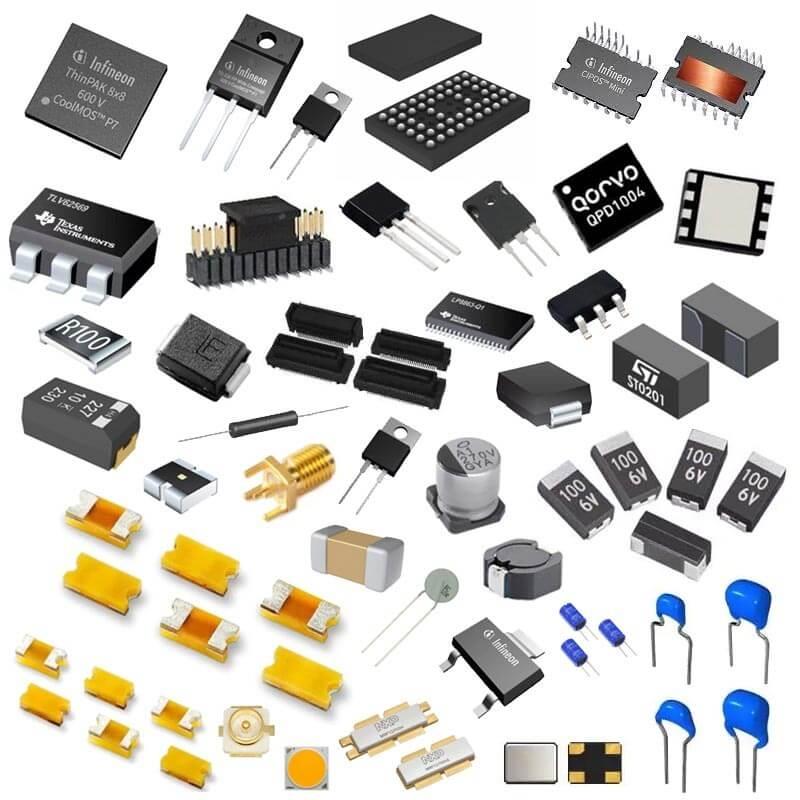
The Future of IC Sourcing: Trends and Innovation
As the world of electronics continues to evolve at a rapid pace, so too does the landscape of IC sourcing. New technological advancements, shifts in consumer demands, and geopolitical factors are reshaping how integrated circuits are sourced, distributed, and utilized. In this section, we will explore the key trends and innovations that are likely to define the future of IC sourcing, including the growing influence of automation, artificial intelligence (AI), machine learning, and the impact of emerging technologies such as the Internet of Things (IoT) and 5G.
The Growing Impact of Automation, AI, and Machine Learning in IC Sourcing
The rise of automation, artificial intelligence (AI), and machine learning (ML) are revolutionizing how businesses manage IC sourcing and supply chains. These technologies are providing manufacturers with new ways to optimize sourcing, streamline operations, reduce costs, and improve decision-making. Here’s how they are shaping the future of IC sourcing:
Predictive Analytics and Demand Forecasting: Machine learning algorithms are increasingly being used to forecast demand more accurately. By analyzing historical data, market trends, and even external factors like economic shifts or geopolitical tensions, AI models can predict the future demand for specific ICs with greater precision. This allows companies to better align their purchasing decisions and avoid overstocking or stockouts, both of which can disrupt production schedules.
- Example: An AI-driven system might analyze data from past supply chain disruptions (e.g., semiconductor shortages) to predict which ICs are likely to experience demand spikes in the future, enabling businesses to act proactively and avoid delays.
Automated Procurement: Automation is transforming procurement by eliminating manual tasks and reducing human error. AI-powered procurement platforms can automatically identify and place orders for ICs based on predefined criteria such as price, lead time, and component availability. These systems can monitor supplier performance and adjust orders dynamically to optimize sourcing based on real-time data.
Supply Chain Optimization: AI and machine learning are enhancing supply chain management by improving inventory management, shipment tracking, and vendor performance analysis. These technologies enable suppliers to optimize their production schedules, automate order processing, and predict potential disruptions before they occur. As a result, businesses can mitigate risks such as component shortages or late deliveries.
Quality Control and Testing: AI is increasingly being used in quality control and testing processes. Machine learning models can be trained to detect anomalies or defects in ICs during production or inspection. This can significantly improve the accuracy and efficiency of quality assurance efforts, ensuring that only high-quality ICs are sourced and delivered to customers.
How IoT and 5G are Shaping the Future Demand for ICs?
Emerging technologies like the Internet of Things (IoT) and 5G are creating new demands for specific types of ICs, driving innovation in sourcing strategies. As these technologies become more widespread, the IC sourcing landscape will continue to evolve to support the growing need for specialized components.
The Internet of Things (IoT):
The IoT is a rapidly growing sector that connects billions of devices and sensors to the internet, creating a need for a wide variety of ICs. IoT devices—ranging from smart home products to industrial sensors—require low-power, high-performance ICs for efficient data processing and connectivity. The demand for system-on-chip (SoC) solutions, sensors, and microcontrollers is particularly high as IoT applications become more diverse and complex.- Impact on IC Sourcing: Manufacturers sourcing ICs for IoT applications must prioritize low power consumption, small form factors, and high integration. This trend is prompting increased demand for mixed-signal ICs, wireless communication ICs, and edge computing ICs, which combine multiple functions in a single chip. Additionally, businesses will need to adapt to rapidly evolving standards for IoT connectivity (e.g., Bluetooth, Zigbee, LoRaWAN) to ensure their ICs remain compatible with new IoT ecosystems.
5G Technology:
5G technology is expected to have a profound impact on the demand for ICs. As telecom networks transition to 5G, the need for high-speed, low-latency components will increase significantly. ICs that support high-frequency bands, signal processing, and network connectivity are essential for 5G devices, including smartphones, connected cars, smart cities, and industrial automation systems.Impact on IC Sourcing: The rollout of 5G will create significant demand for advanced radio frequency (RF) ICs, power amplifiers, modem ICs, and signal processing ICs. Sourcing these components requires suppliers who are capable of delivering cutting-edge ICs that meet the stringent performance requirements of 5G networks. Manufacturers will need to carefully select sourcing partners with expertise in RF components and 5G technologies.
Example: A company developing 5G-enabled devices will need to source ICs capable of handling higher data transfer speeds and low-latency communications. These ICs need to be designed to handle the complex requirements of 5G radio interfaces, requiring advanced design and manufacturing capabilities.
Key Takeaways
Automation and AI: As technologies like AI and automation continue to evolve, they will become integral to optimizing IC sourcing strategies, improving demand forecasting, procurement efficiency, and supply chain management.
IoT and 5G Demand: The growing adoption of IoT devices and the rollout of 5G technology are driving demand for specialized ICs, particularly in areas such as low-power sensors, RF components, and high-performance processors. Manufacturers must adapt their sourcing strategies to support these emerging technologies, selecting suppliers with expertise in these specialized areas.
Innovation in IC Sourcing: The future of IC sourcing will be defined by increased automation, smarter supply chain management, and a heightened focus on emerging technologies. As companies adapt to these innovations, they will be better equipped to meet the growing and evolving demand for ICs in a rapidly changing technological landscape.
In conclusion, businesses that embrace the opportunities presented by automation, AI, IoT, and 5G will be well-positioned to secure a competitive advantage in the IC sourcing market, driving innovation and success in their industries.
Chapter 10
How to Get Started with IC Sourcing?
Sourcing Integrated Circuits (ICs) effectively is a crucial aspect of running a successful electronics manufacturing operation. With the rapidly changing landscape of the semiconductor industry, businesses need to take proactive steps to ensure they can secure high-quality components at competitive prices while maintaining supply chain reliability. This section provides a recap of the key takeaways for successful IC sourcing, as well as actionable steps to help businesses get started, and highlights why partnering with a professional IC sourcing provider is the best choice for long-term success.
Recap of Key Takeaways for Successful IC Sourcing
Quality is King: Ensure that the ICs you source meet the required performance, safety, and compliance standards. This includes verifying authenticity, conducting third-party testing, and working with reputable suppliers who provide transparency and certification.
Plan for Supply Chain Risks: The semiconductor market is vulnerable to various risks, such as price volatility, component shortages, and geopolitical disruptions. Develop risk mitigation strategies, such as maintaining buffer stocks, diversifying suppliers, and leveraging AI-driven demand forecasting tools to stay ahead of potential supply chain issues.
Adapt to Industry-Specific Needs: Different industries have unique IC sourcing requirements. Whether you’re in consumer electronics, automotive, or medical devices, make sure you understand the specific performance, certification, and quality standards required for your sector. Tailoring your sourcing strategy to these needs will help you meet customer expectations and avoid costly errors.
Leverage Technology for Efficiency: Technologies like automation, AI, and machine learning are transforming IC sourcing. Use these tools to streamline procurement, improve demand forecasting, automate inventory management, and enhance quality control processes. This will enable you to reduce lead times, manage costs, and improve overall efficiency.
Build Strong Supplier Relationships: Cultivate strong, long-term relationships with trusted suppliers. A reliable supplier network ensures a steady flow of high-quality ICs and can help you overcome sourcing challenges. Work with suppliers who offer transparency, reliability, and the ability to scale with your business growth.
Actionable Steps for Businesses to Start Sourcing ICs Efficiently
To begin sourcing ICs efficiently and effectively, follow these key actionable steps:
Assess Your Needs: Start by evaluating your specific IC requirements. Understand the types of components needed for your products, their technical specifications, and any industry-specific certifications required. Create a list of potential ICs, along with performance benchmarks, to guide your sourcing decisions.
Research and Select Suppliers: Begin researching potential suppliers who can meet your requirements. Look for suppliers with a proven track record in delivering high-quality ICs, offering competitive pricing, and having a robust quality control process in place. Consider whether you need a local or global supplier based on your lead time and shipping needs.
Verify Authenticity and Compliance: Ensure that the ICs you source are authentic and comply with relevant industry standards. Check for certifications such as RoHS, ISO 9001, or UL, and request quality assurance documentation. If you’re working with new suppliers, request product samples and perform third-party testing to verify quality before committing to large orders.
Implement Risk Management Strategies: To mitigate supply chain risks, develop a risk management plan. This can include strategies such as diversifying suppliers, maintaining buffer stocks of critical components, and monitoring geopolitical or market trends that may affect supply chains. Consider using AI-based tools for demand forecasting to reduce the risk of shortages or price fluctuations.
Monitor and Optimize Your Sourcing Strategy: Continuously track the performance of your IC sourcing process. Assess supplier performance, monitor quality metrics, and evaluate the cost-effectiveness of your sourcing strategy. Use insights from your operations to refine and optimize your approach over time, ensuring you maintain a competitive advantage.

Get in touch
Where Are We?
Industrial Park, No. 438 Donghuan Road, No. 438, Shajing Donghuan Road, Bao'an District, Shenzhen, Guangdong, China
Floor 4, Zhihui Creative Building, No.2005 Xihuan Road, Shajing, Baoan District, Shenzhen, China
ROOM A1-13,FLOOR 3,YEE LIM INDUSTRIAL CENTRE 2-28 KWAI LOK STREET, KWAI CHUNG HK
service@southelectronicpcb.com
Phone : +86 400 878 3488
Send us a message
The more detailed you fill out, the faster we can move to the next step.



